For a cell, the graph between the potential difference (V) across the terminals of the cells and the current I drawn from the cell is as shown in figure. Calculate the e.m.f. and the internal resistance of the cell.
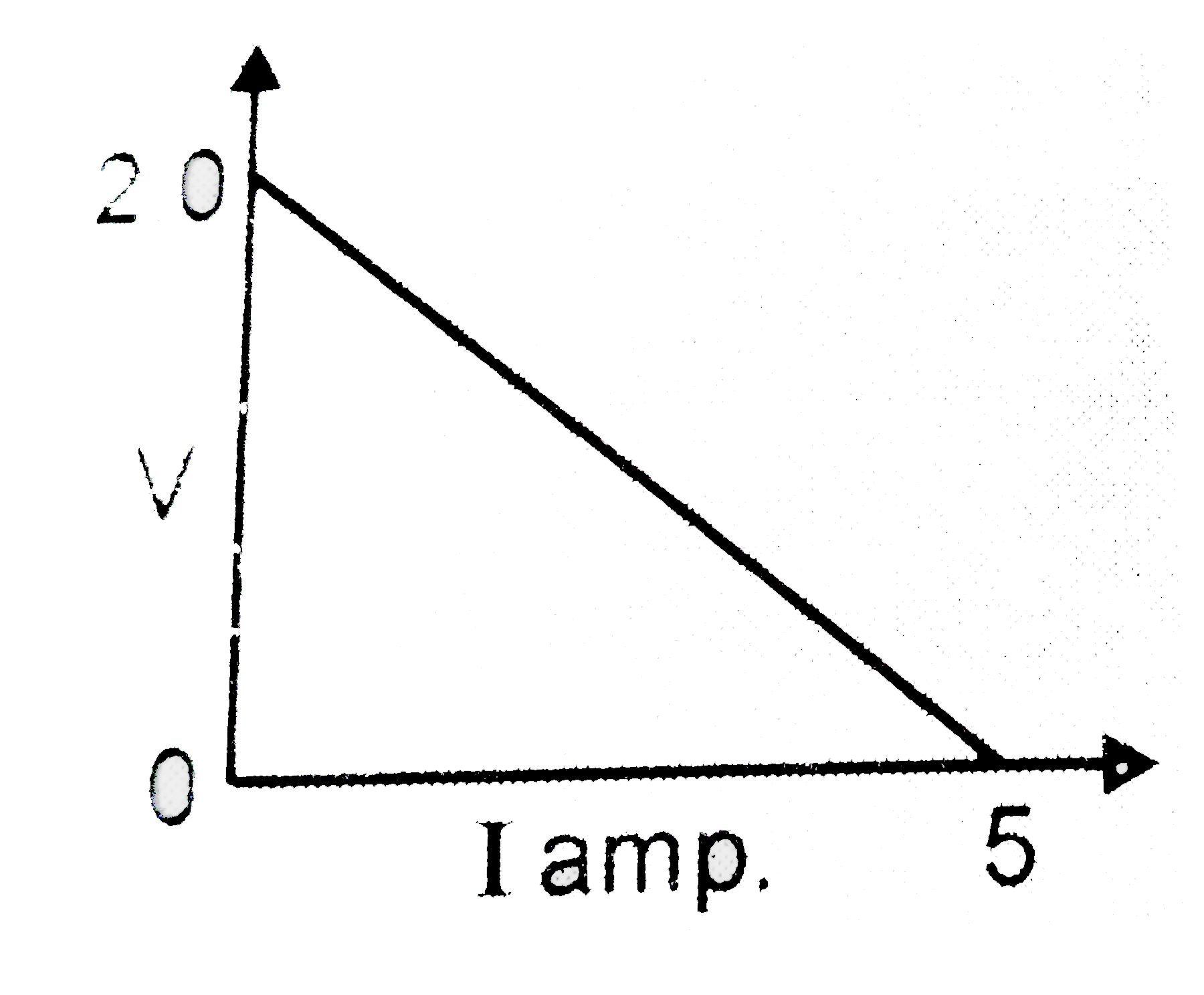 Solution in Gujrati
Solution in Gujrati
The correct Answer is:(A)
By using reduced mass concept this system can be reduced to 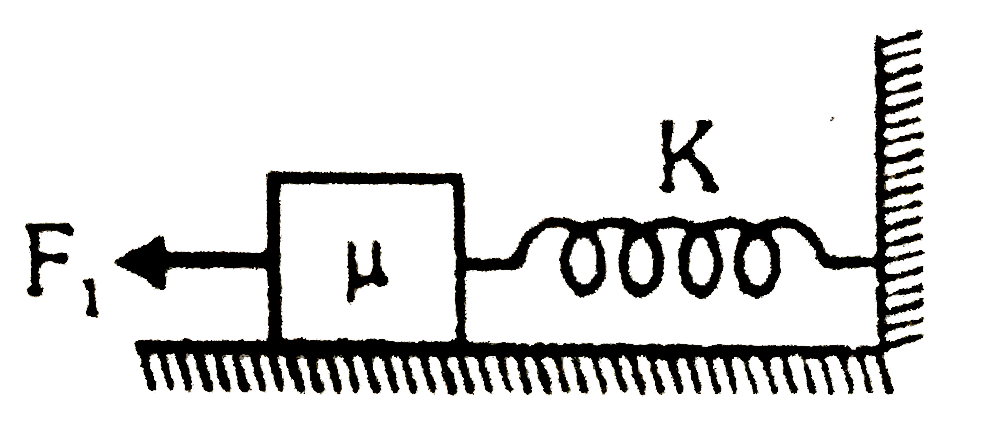
Where μ=(3m)(6m)3m+6m=2m and F1= Force on either block w.r.t. centre of mass of the system
=F2+(3m)acm=F2+(3m)(F−F/29m)=F2+F6=23F
Now from wrok energy theorm, 2F3xm=12Kx2m⇒xm=4F3K
Topper's Solved these Questions
- CURRENT ELECTRICITYBOOK - ALLEN CHAPTER - CURRENT ELECTRICITYEXERCISE - EXERCISE-III
26 Videos
- CURRENT ELECTRICITYBOOK - ALLEN CHAPTER - CURRENT ELECTRICITYEXERCISE - EXERCISE-IV A
32 Videos
- CIRCULAR MOTIONBOOK - ALLEN CHAPTER - CIRCULAR MOTIONEXERCISE - EXERCISE (J-A)
6 Videos
- GEOMETRICAL OPTICSBOOK - ALLEN CHAPTER - GEOMETRICAL OPTICSEXERCISE - subjective
14 Videos
Similar Questions
If each resistance in the figure is of 9Ω then reading of ammeter is

View SolutionBy a cell a current of 0.9 A flows through 2 ohm resistor and 0.3A through 7 ohm resistor. The internal resistance of the cell is
View SolutionA ball of mass (m)0.5kg is attached to the end of a string having length (L)0.5m. The ball is rotated on a horizontal circular path about vertical axis. The maximum tension that the string can bear is 324N. The maximum possible value of angular velocity of ball (radian/s) is -
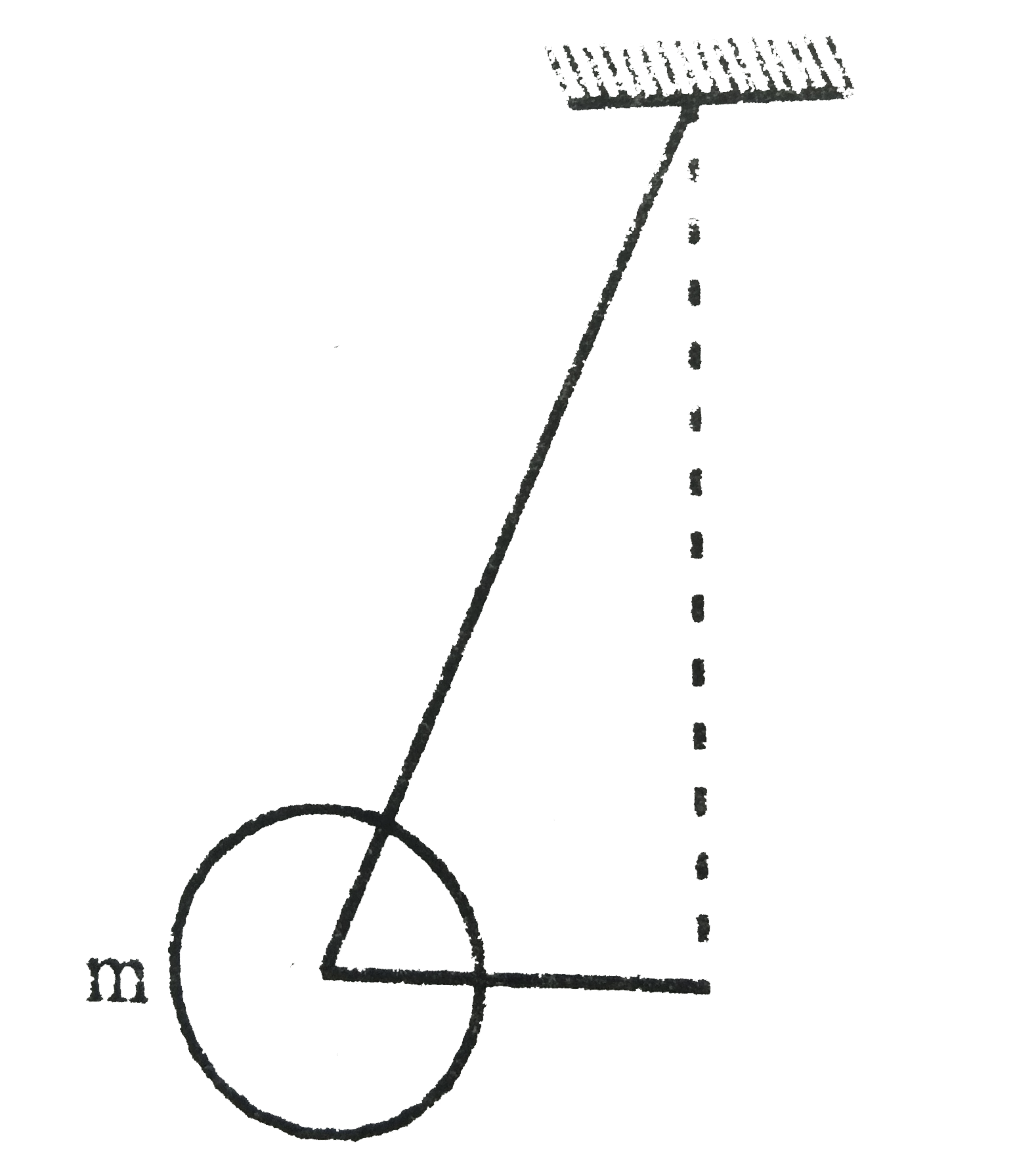 .
.
View SolutionA prism of refractive index n1 & another prism of reactive index n2 are stuck together without a gap as shown in the figure.The angle of the prisms are as shown. n1&n2depend onλ,the wavelength of light according to n1=1.20+10.8×104λ2&n2=1.45+1.80×104λ2 where λ is in nm.
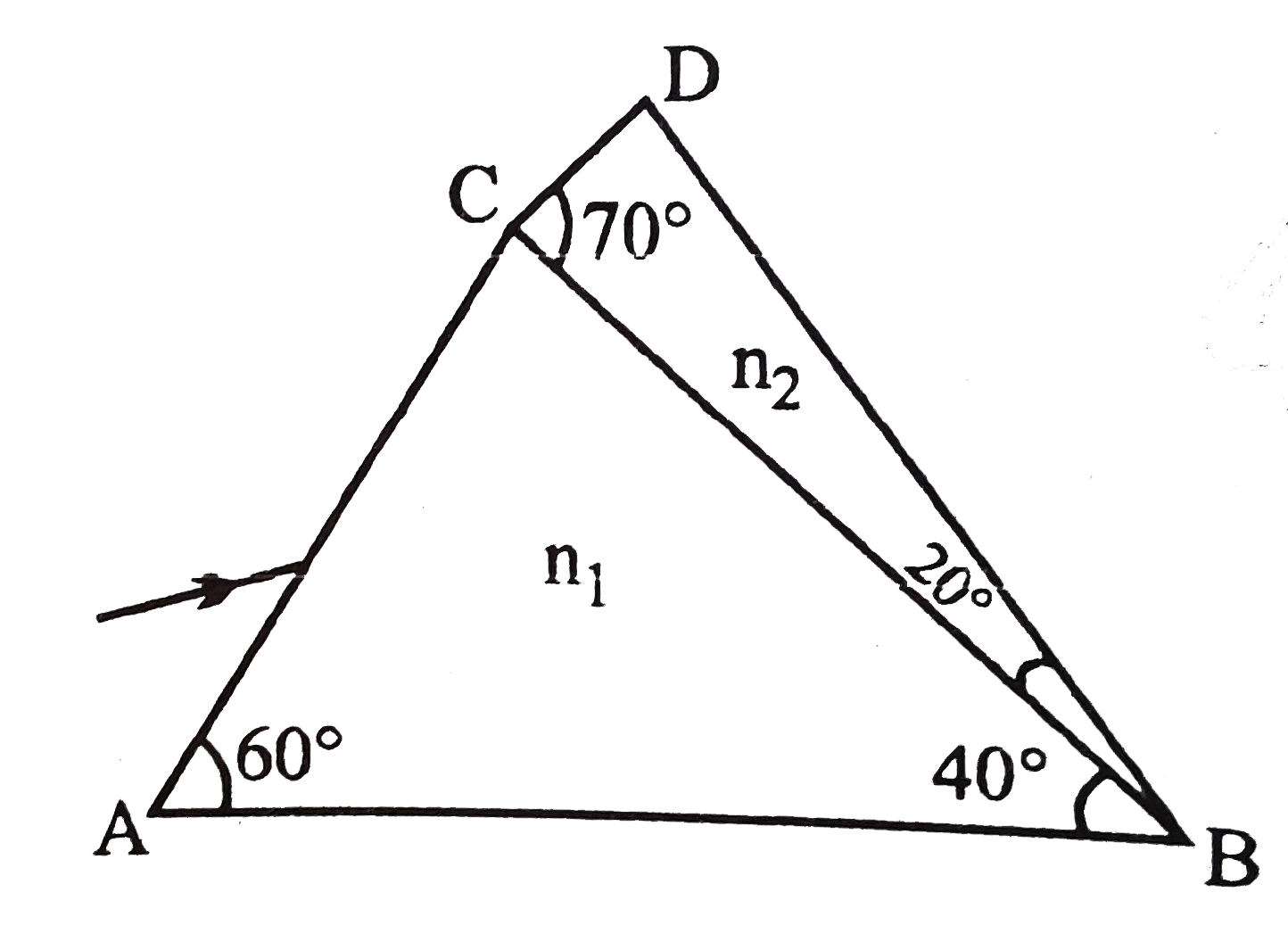
(i)Calculate the wavelength λ0for which rays incident at any angle on the interfaceBCpass through without bending at that interface.
(ii) for light of wavelength λ0,find the angle of incidencei on faceACsuch that the deviation produced by the combination of prism is minimum.
View SolutionFor a cell, a graph is plotted between the potential difference V across the terminals of the cell and the current I drawn the cell. The emf and the internal resistance of the cell are E and r, respectively. Then
View SolutionPotential differences across the terminals of a cell were measured (in volt) against different currents (in ampere) flowing through the cell. A graph was drawn which was a straight line ABC as shown in figure Determine from graph (i) emf of the cell (ii) maximum current obtained from the cell and (iii) internal resistance of the cell.
View Solution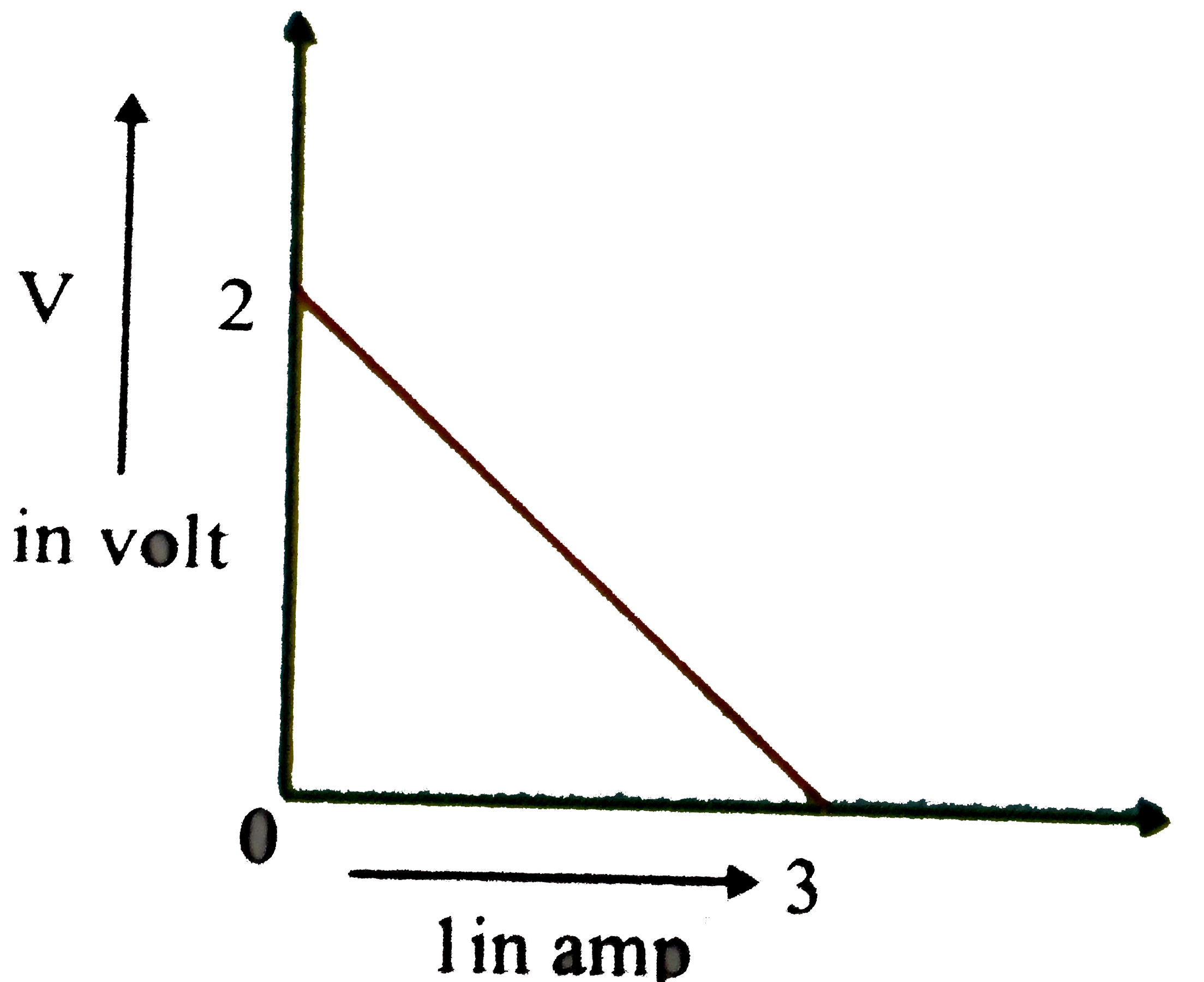
For a cell the graph between the p.d. (v) across the terminals of the cells and the current (I) drawn from the cell as shown. The emf and internal resistance is
View Solutionfor a cell, the graph between the p.d. (V) across the terminals of the cell ad te current I drawn from the cell is shown in the fig. the emf and the internal resistance of the cell is E and r respectively.
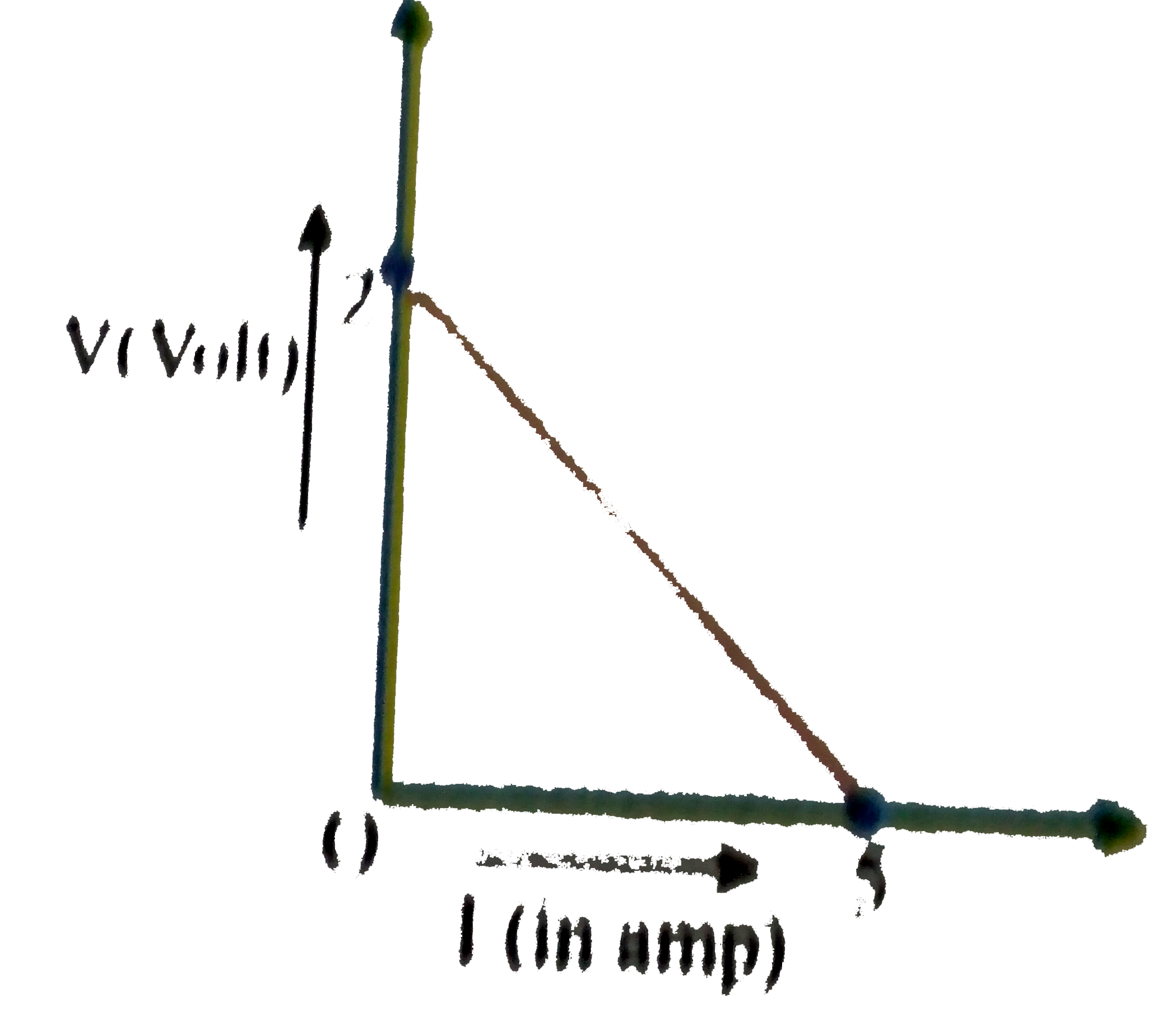
View SolutionIf internal resistance of a cell is proportional to current drawn from the cell. Then the best representation of terminal potential difference of a cell with current drawn from cell will be
View SolutionThe figure shows a plot of terminal voltage 'V' verus the current 'I' of a given cell. Calculate from the graph (a) emf of the cell and (b) internal resistance of the cell.
View SolutionThe potential difference betwee11 the terminals of a cell in an open circuit is 2.2 V. When a resistor of 5Ω is connected across the terminals of the cell, the potential difference between the terminals of the cell is found to be 1.8 V. The internal resistance of the cell is
View SolutionThe figure shows a plot of terminal voltage 'V' verus the current 'I' of a given cell. Calculate from the graph (a) emf of the cell and (b) internal resistance of the cell.
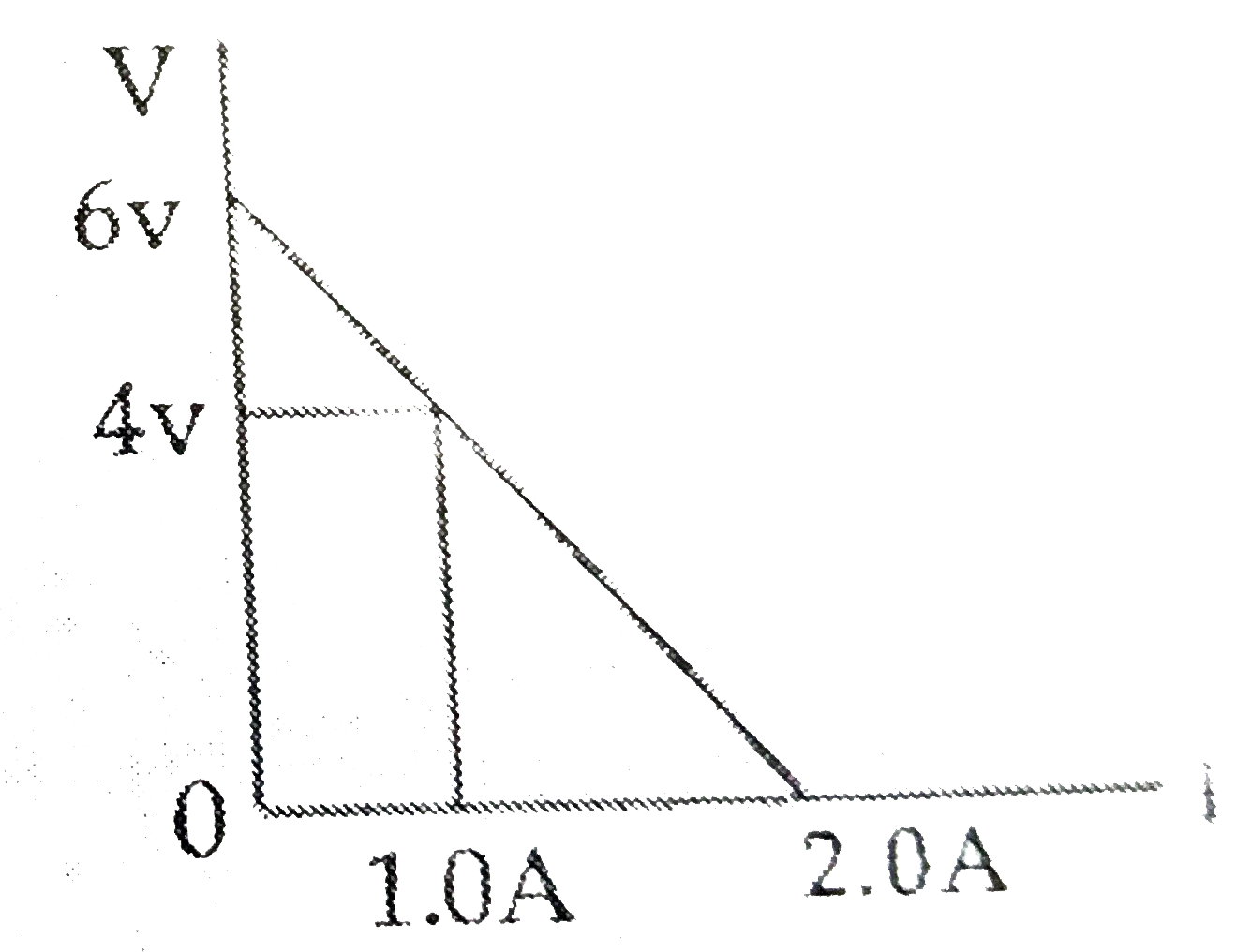
View SolutionFor a cell, the graph between the p.d.(V) across the terminals of the cell and the current I drawn from the cell is shown in the fig. the emf and the internal resistance of the cell is E and r respectively.
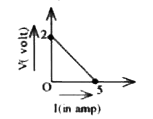
View SolutionFor a cell, the graph between the p.d.(V) across the terminals of the cell and the current I drawn from the cell is shown in the fig. the emf and the internal resistance of the cell is E and r respectively.
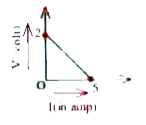
View SolutionIf internal resistance of a cell is proportional to current drawn from the cell. Then the best representation of terminal potential difference of a cell with current drawn from cell will be
View SolutionThe potential difference between the terminals of a cell in open circuit is 2.2 V. With resistance of 5Ω across the terminals of a cell, the terminal potential difference is 1.8 V. The internal resistance of the cell is
View Solution
